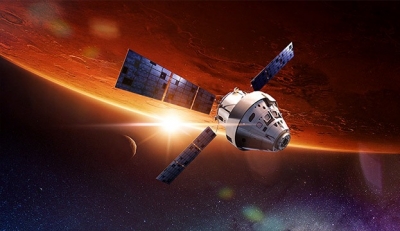
Scientists send spacecraft to probe objects in space. These spacecraft carry instruments that help them take pictures and collect data in space and send them back to Earth. But to do this, the spacecraft needs electricity So what powers it?
Based on the mission it is assigned, and factors such as where the spacecraft is travelling, what it plans to do there and how long it needs to work engineers choose the best way to power a spacecraft.
The Sun
One source of power engineers consider is energy from the Sun, or solar power. Spacecraft that orbit close to Earth are dose enough to the Sun to use solar power. These spacecraft are fitted with solar panels, which convert the Sun’s energy into electricity. The electricity from the panels charges a battery in the spacecraft and can be used even when the spacecraft doesn’t have direct sunlight
Batteries
Sometimes, when the mission is only for a short duration, such as the Huygens probe that landed on Titan, Saturn’s largest moon, and meant to work only for a few hours, engineers may power the spacecraft with batteries. These batteries are designed to be tough since they need to withstand the harsh environment of space.
Atoms
An atom is a tiny building block of matter. Atoms need to store a lot of energy to hold themselves together. However, atoms such as radioisotopes are unstable and begin to fall apart. As they fall apart, they release energy as heat. A radioisotope power system uses the temperature difference between the heat from the unstable atoms and the cold of space to produce electricity. This system produces power for a very long time even in harsh environments. That’s why this system has been used to power many of NASA’s missions, including the two Voyager spacecraft that continue to send back information after over four decades in space.
Picture Credit : Google




